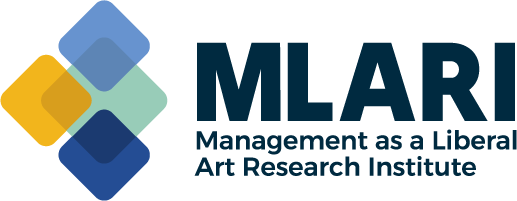How to Lead Change
PUBLISHED:
Drucker said that the best way to deal with change was NOT to manage it, but to lead it. To do this the leader of any organization has to have a system in place whereby needed changes are identified, reviewed, and adopted periodically.
Drucker maintained that any business had two important functions: innovation and marketing. The two must operate together. Moreover, he noted that any change is an innovation, if only to that organization or the user. After the innovation is created it must be accepted by those who receive, implement, and use it and therefore it must be marketed to them effectively and early in the process. Note that both of Drucker’s primary business functions, innovation and marketing, are critical in leading change.
Successful Change Leader
The introduction of a new product is a change. Entrepreneur E. Joseph Cossman isn’t well-known today, but he was an unbelievably productive innovator who created so many winning new products that it was a miracle that he found the time and resources to pursue them all. Still, he exploited most of them successfully. He also followed a different sequence of his education. He became successful in business first, and then attended college first for an undergraduate business degree and then after he was well established for an MBA. Then he wrote a bestselling book, How I Made a Million Dollars in Mail Order which reportedly sold over 1,000,000 copies.
Most of his new products made money every time he introduced one. Moreover, he worked alone and never sought to head a large corporation. A few of his products failed, but there was no question that his success average, as well as his productivity, were both excellent and that made him an expert as an innovator and change leader in his chosen field. For example, the Cossman “Ant Farm” was a hugely successful innovation and is still being sold.
The 19th Century Toy that was an Innovation in the 20th Century
Cossman’s “ant farm” sold in the millions and is still selling. One was bought by President Kennedy for his daughter, Caroline. The idea of re-developing a 19th century toy for children based on an ant colony, with the correct kind of dirt the ants needed for their living environment and using a wooden framework of about twelve inches by twelve inches surrounded by clear panes of glass was hardly new. It had been around for a long time. Observers could watch all the activities of the ants living their lives by looking through clear windows on a thin, picture-frame box was not new either. This basic concept had been around for eighty years or more when Cossman introduced his innovation called an “ant farm” as a child’s toy and that was a major change and was new. However, that’s only where his innovation started. The old version never attempted to create a mass market as a toy for children because the window panes permitting observation of the colony’s activities were constructed from glass and were an obvious hazard as the glass could easily break and made the toy dangerous for the owner or other observers.
Although the original ant colony concept worked when used under the supervision of a teacher in a classroom, before Cossman it could not be sold as a child’s toy, and not only because of the danger of the glass breaking. Unfortunately, the glass-wood interface was not perfect, and the ants frequently escaped in the classroom, much to the dismay of both teachers and their students. Parents would have been even less enthusiastic about this characteristic if it had been a simple child’s toy.
Not only was Cossman’s “ant farm” intended as an educational toy for children at home, but it was also made a safe toy by Cossman’s changes. Cossman replaced the wooden frame and glass with clear plastic. That made it lighter, unbreakable under normal use, and safe for children and more secure regarding the ants’ ability to escape. As a bonus, it was much less expensive to manufacture. However, even the name selected for the toy, “ant farm” was unique, provocative, and promoted increased sales. His distribution system for the ants was logical but even unique, and it was brilliant. Cossman sold every ant farm with a “livestock certificate.” It was packaged with the toy and was sent to Cossman by the buyer after purchasing the product. Cossman guaranteed live delivery of the “livestock” to populate the farm on receipt of a certificate.
So effective were these innovations, that the “ant farm” was an immediate success and more than sixty years after Cossman’s introduction, the product is still being sold today.
Drucker’s System for Leading Change was Unique Too
Drucker told us that preferably we must take the initiative to introduce change before a competitor, or a change mandated by higher authority in our own organization forced us to act. He even recommended modifying the organization so that new changes proposed were recognized by everyone in the organization was prepared for them from the start, beginning with reviewing the need for all changes on an ongoing basis.
Opportunities for change or new products may occur in many ways. These might include:
1. Unexpected successes and failures, both our own and that of others
2. Occurrences that have had unexpected results
3. Emergencies Situations
4. Changes in industry or market structures
5. Changes in demographics
6. Changes in meaning and perceptions of a product
7. Actions by one or more competitors
8. New knowledge
Drucker found that its not necessarily the size of the change that is most important, but the advantage created by the change. Moreover, Drucker told us what we should avoid and how we should approach innovation to build and maintain the success of our organizations with a continual stream of new ideas.
He also recommended specific ways to approach innovation that were new and that most other institutions were not following.
· For example, a review board was established. It met frequently and periodically to review proposed new ideas and the need for them and other changes.
· A review of the budget needed for the innovation was established at the first meeting as was a tentative strategy to be followed for the innovation’s development and its introduction.
· Potential problems that could occur due to the introduction of the innovation along with their potential solutions were identified before the decision was made to proceed.
· The plan as to how the change or product would be developed over time was also begun early.
Because products and procedures currently in use would be affected, what would be done about them were also identified. Most importantly the effect that proposed changes would have on people in the company and subordinate company organizations were also identified with solutions to the problem.
This important step was needed because a major factor that is frequently overlooked was the necessity of discontinuing existing organizations, products or functions in our companies that had been part of successful products or procedures in the past and which would be replaced by what we propose to interduce, especially if the current product, methods, or whatever are still working and may even still be profitable.
This problem occurs because many in our organization will still be committed to the old way or old products, especially if they are still profitable and individuals involved have been affected positively in their careers by these dated innovations in the past. If we do nothing, the old product or way of operating will continue to receive priority over the new innovation and the change you want to implement, and it will be much more difficult to introduce the new innovation successfully.
Drucker told us that we must innovate with this insight. It’s not the size of the change, but the size of the advantage created by the change that is important. However, Drucker did not leave it there. He told us how we should proceed, what we should avoid, and how we should approach innovation to build and maintain the success of our organizations by employing the best way to seek, develop, and introduce new ideas into an organization. Drucker found, and others proved by the adaptation of his methods, that he was right and that what he suggested led to successful changes in any field.
Adapted from:





